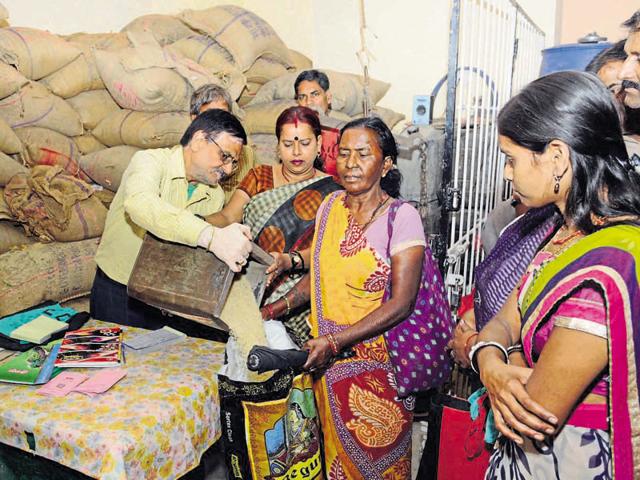Bhubaneswar: To cover more beneficiaries under the Public Distribution System (PDS), the state government has modified guidelines governing selection of people for inclusion under the National Food Security Act (NFSA) 2013.
The Food Supplies & Consumer Welfare (FS&CW) department has recently issued a gazette notification on modification of auto-inclusion and auto-exclusion criteria.
The state government has included five more auto-inclusion criteria in addition to the existing six auto-inclusion criteria and modified the 9th exclusion criteria notified earlier for identification of priority households and Antyodaya Anna Yojana (AAY) households to be covered under the targeted PDS scheme.
With the modification now, households with old persons (aged 60 or above) with no regular support, no assured means of subsistence will be covered under the Act.
Similarly, households with old person, people with lack of physical or mental fitness and families with no adult member can also avail the benefits. The households dependent on daily wages and internally displaced due to various projects will also get ration like other BPL people.
Besides, the government has also decided to include households having a person suffering from leprosy/HIV/any other critical diseases under NFSA.
The auto-exclusion criteria has also been slightly modified. Now, people who constructed pucca houses (three or more rooms) under Indira Awas Yojana (IAY), Pradhan Mantri Awas Yojana (PMAY), Biju Pucca Ghar Yojana (BPGY), Nirman Shramik Yojana and Rehabilitation & Reconstruction (RR) projects of the government will not be able to get PDS benefits. Earlier, beneficiaries of IAY, PMAY and BPGY were there in the exclusion criteria.
According to official sources, above 3.17 crore beneficiaries have been covered under NFSA so far, of which 86,53,679 have got ration cards. Out of the total NFSA beneficiaries, 41,03,176 have been covered under AAY while 2,76,89,012 are identified as priority households.
